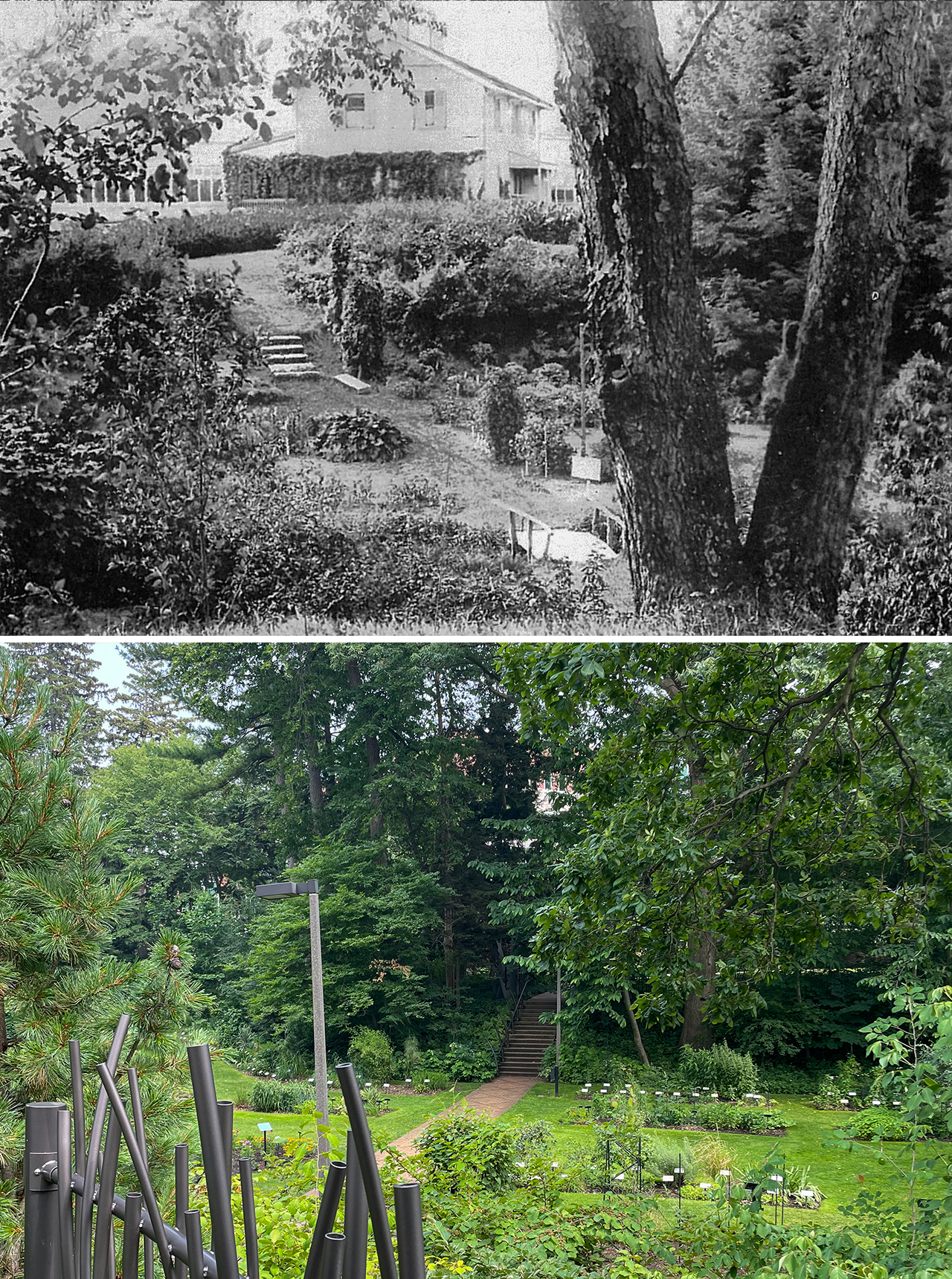View from West Circle Drive (1940s)


In the early 1950s, around a decade after this photo was taken, the garden underwent a monumental redesign, changing it from a more informal look that preserved as much wilderness as possible to the more curated look that the garden has to this day. The redesign was so massive that curator George Parmalee stated “Every plant that was in the original garden was moved, except for the Missouri Primrose.”
There were many goals of the redesign, including improving the aesthetic appearance, introducing more educational content, and making it easier to maintain. It was decided that the garden would be split into 2 sections, economic (plants that have been used by humans in everyday life) and systematic (plants organized according to their families and ancestry). This decision was based on the garden’s roots as an outdoor laboratory and learning space. The plants were arranged in a manner similar to what would be found in botanical textbooks.
As we think about our next 150 years, questions are being raised as to whether this is the best arrangement for the garden moving forward. What do you think? If you have thoughts on how the garden should be designed moving forward, email them to wjbeal@msu.edu.